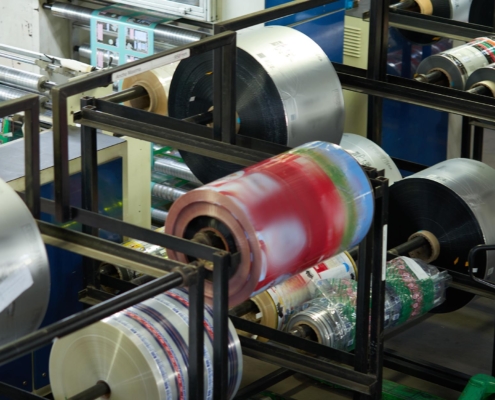 https://ustl.com/wp-content/uploads/2024/09/Large-printer-format-inkjet-working.jpg
1250
2000
AbstraktMarketing
/wp-content/uploads/2024/10/October-2024-Logo.jpg
AbstraktMarketing2024-09-16 09:34:102024-10-21 15:27:22Why Use Custom Label Printing Services?
https://ustl.com/wp-content/uploads/2024/09/Large-printer-format-inkjet-working.jpg
1250
2000
AbstraktMarketing
/wp-content/uploads/2024/10/October-2024-Logo.jpg
AbstraktMarketing2024-09-16 09:34:102024-10-21 15:27:22Why Use Custom Label Printing Services?The Complete Guide To Automotive Labels
If you’re in the automotive industry, you know that product labelsare essential to creating a successful consumer product. Labels provide important information about your product, from safety warnings to instructions on how to use it. In this guide, we’ll take a look at why labels are so important for automotive products, which products typically include labels, and how well these labels hold up over time. We’ll also walk through the essential information to include on one. Here’s everything you need to know about automotive labels.
Why Are Product Labels So Important for Automotive Products?
Labels are essential to any automotive product, from components to finished products. Labels provide important information about the product, such as warnings, instructions, and other vital information for its safe use. This helps ensure consumers understand how to use the product safely and effectively. Some labels are required by law to meet safety standards, so it’s important to ensure you’re using compliant labels on your products.
What Automotive Products Include Product Labels?
Automotive labels can be found on various automotive products, from components like spark plugs to batteries. These labels can be found on both the interior and exterior of the vehicle, providing important information about the product. The most common labels include warning labels for potential hazards, airbag warnings, instruction labels, engine oil level indicators, and certification and regulatory labels.
How Do Automotive Labels Hold Up?
Durability is one of the most critical factors when selecting a label for a particular automotive product. Automotive product labels must be able to withstand temperature extremes, weathering, UV exposure, humidity, and chemical exposure over time without losing their integrity or fading out completely. When selecting your labeling solution, look for high-quality materials specifically designed for automotive applications. This will help ensure your labels won’t peel off or fade quickly after being applied to a component or vehicle.
Eight Important Pieces of Information to Include on Automotive Labels
Automotive labels play a crucial role in providing essential information and are affixed to various components, parts, and systems within a vehicle. Be sure to include all of this information:
Manufacturer’s Name and Address
One of the most essential pieces of information to include on automotive labels is the manufacturer’s name and address. This helps identify the responsible party for the production and ensures traceability in case of any issues or recalls.
Maintenance and Service Instructions
This information can include recommended service intervals, fluid types, tire pressure guidelines, and other maintenance-related details. Clear instructions enable vehicle owners to care for their vehicles properly, ensuring longevity and performance.
Vehicle Identification Number
The Vehicle Identification Number (VIN) is a unique alphanumeric code assigned to each vehicle. It serves as a fingerprint for the vehicle, providing vital information such as the country of origin, manufacturer, model year, and vehicle specifications. Including the VIN on automotive labels helps in vehicle identification, maintenance, and tracking.
Safety Information
Automotive labels must include safety-related information to ensure the well-being of vehicle occupants and others on the road. This may include warning labels about airbags, seat belts, child safety seats, and other safety features. Labels indicating potential hazards, such as high voltage areas or hot surfaces, should be included to prevent accidents and injuries.
Emissions and Fuel Economy Information
With the increasing emphasis on environmental sustainability, automotive labels should provide information related to emissions and fuel economy. Including the vehicle’s fuel efficiency rating, CO2 emissions, and compliance with emission standards helps consumers make informed choices and contributes to a greener future.
Warranty Information
Labels should clearly state the warranty information provided by the manufacturer. This includes the duration of the warranty, specific coverage details, and any applicable conditions or limitations. Warranty information helps consumers understand their rights and assures the quality and reliability of the vehicle.
Regulatory Compliance and Certification Marks
To ensure compliance with safety and environmental regulations, automotive labels must include relevant certification marks. These marks indicate that the vehicle or its components meet the required standards set by regulatory authorities. Examples include safety certification labels like the National Highway Traffic Safety Administration (NHTSA) or emissions compliance certifications like the Environmental Protection Agency (EPA) label.
QR Codes or Bar Codes
Incorporating QR codes or barcodes on automotive labels can enhance accessibility to additional information. These codes can be scanned using smartphones or barcode readers to access online resources such as user manuals, technical specifications, or recall information. This interactive feature improves user experience and ensures convenient access to relevant information.

Now that we’ve covered all the key information to include in a custom labelfor automotive products, be sure to review the basics of label printingby reading this article.
The Benefits of Quality Automotive Labels
- Enhanced safety: Quality labels provide vital information on safety precautions and hazards in vehicles.
- Regulatory compliance: Automotive labels ensure compliance with industry regulations and display important information like emissions and VINs.
- Improved maintenance: Clear labels help technicians identify parts and maintenance requirements.
- Brand reputation: Quality labels reflect a commitment to excellence and customer satisfaction.
- Easy troubleshooting: Labels with clear instructions assist users in basic troubleshooting.
- Efficient recalls and warranty claims: Labels aid in identifying affected vehicles during recalls or warranty claims.
- Resale value and consumer confidence: Intact labels indicate well-maintained vehicles and boost resale value.
- Language accessibility: Multilingual labels make information accessible to diverse drivers.
- Environmental consciousness: Labels provide information on fuel efficiency and emissions, raising awareness.
- Standardization and consistency: Quality labels adhere to industry standards for easy understanding.
U.S. Tape & Label: Your Source for Custom Labels In the Automotive Industry
From automotive batteries to engines, U.S. Tape & Label’s custom labels are designed to withstand the harshest of conditions and remain as pristine as ever. These durable labels come with various protective features like chemical and temperature resistance, so your message is crystal-clear for the long haul. Don’t go for anything less than perfection—choose USTL for top-notch automotive labeling services.
Share This Post
More Like This
 https://ustl.com/wp-content/uploads/2024/09/Large-printer-format-inkjet-working.jpg
1250
2000
AbstraktMarketing
/wp-content/uploads/2024/10/October-2024-Logo.jpg
AbstraktMarketing2024-09-16 09:34:102024-10-21 15:27:22Why Use Custom Label Printing Services?
https://ustl.com/wp-content/uploads/2024/09/Large-printer-format-inkjet-working.jpg
1250
2000
AbstraktMarketing
/wp-content/uploads/2024/10/October-2024-Logo.jpg
AbstraktMarketing2024-09-16 09:34:102024-10-21 15:27:22Why Use Custom Label Printing Services?
Comparing Shrink Sleeve vs Wrap-Around Labels

Does My Company Need New Product Labels? 7 Signs It’s Time To Upgrade

How to Use Eco-Friendly Labels for Your Products

What Is Rotary Screen Printing?

The Comprehensive Guide to Proper Label Application: Elevating Your Product Presentation

The Purpose of Product Labels and Proper Packaging

Common Label Design Mistakes

Tips to Choosing the Right Label Font for Your Product
Get In Touch
Phone
(314) 824-4444
Why U.S. Tape & Label?
Centrally-located and equipped with the cutting-edge equipment you need to get the best labels and look for your products. Our skilled team of in-house engineers will help you make the perfect label for any product you have.



